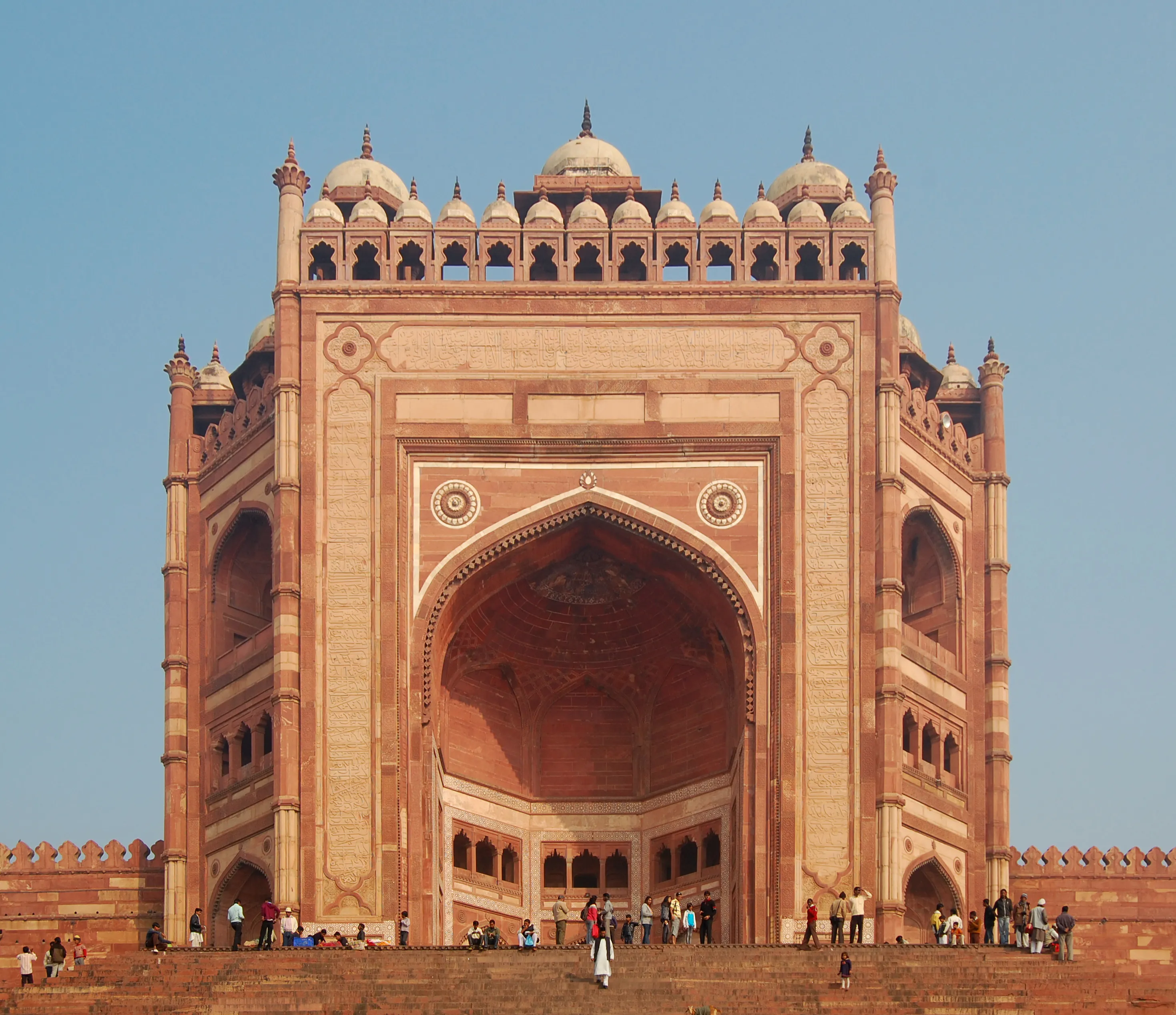
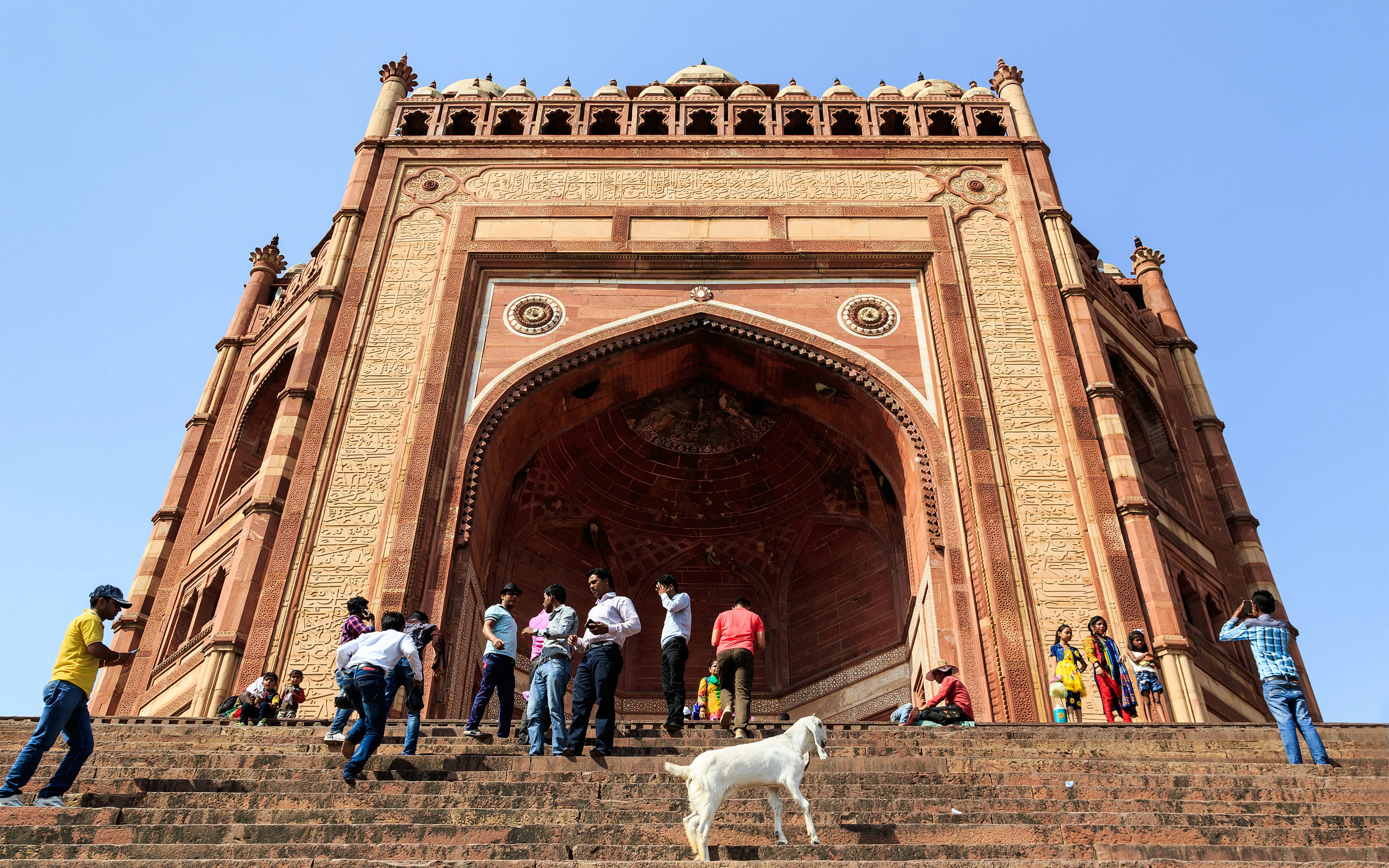
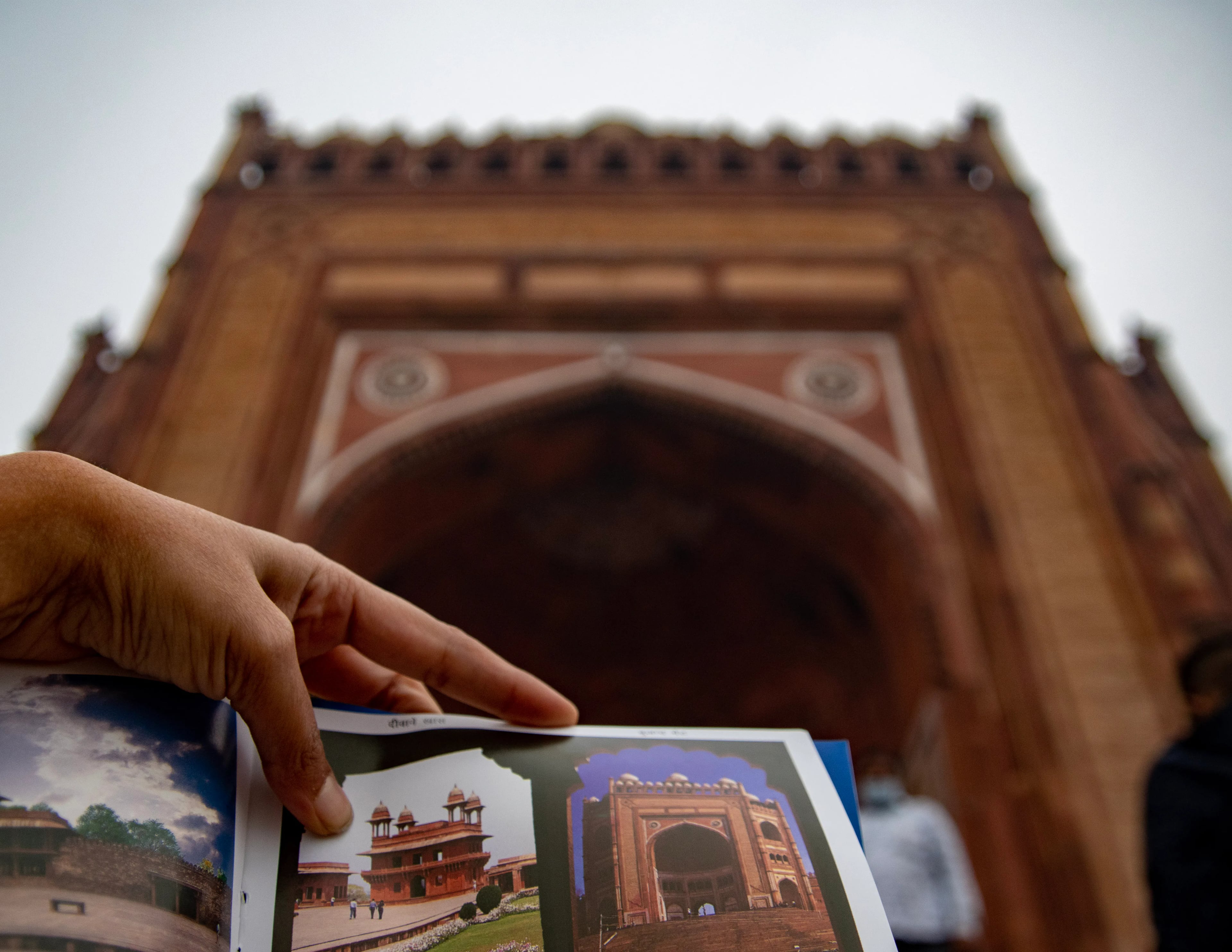
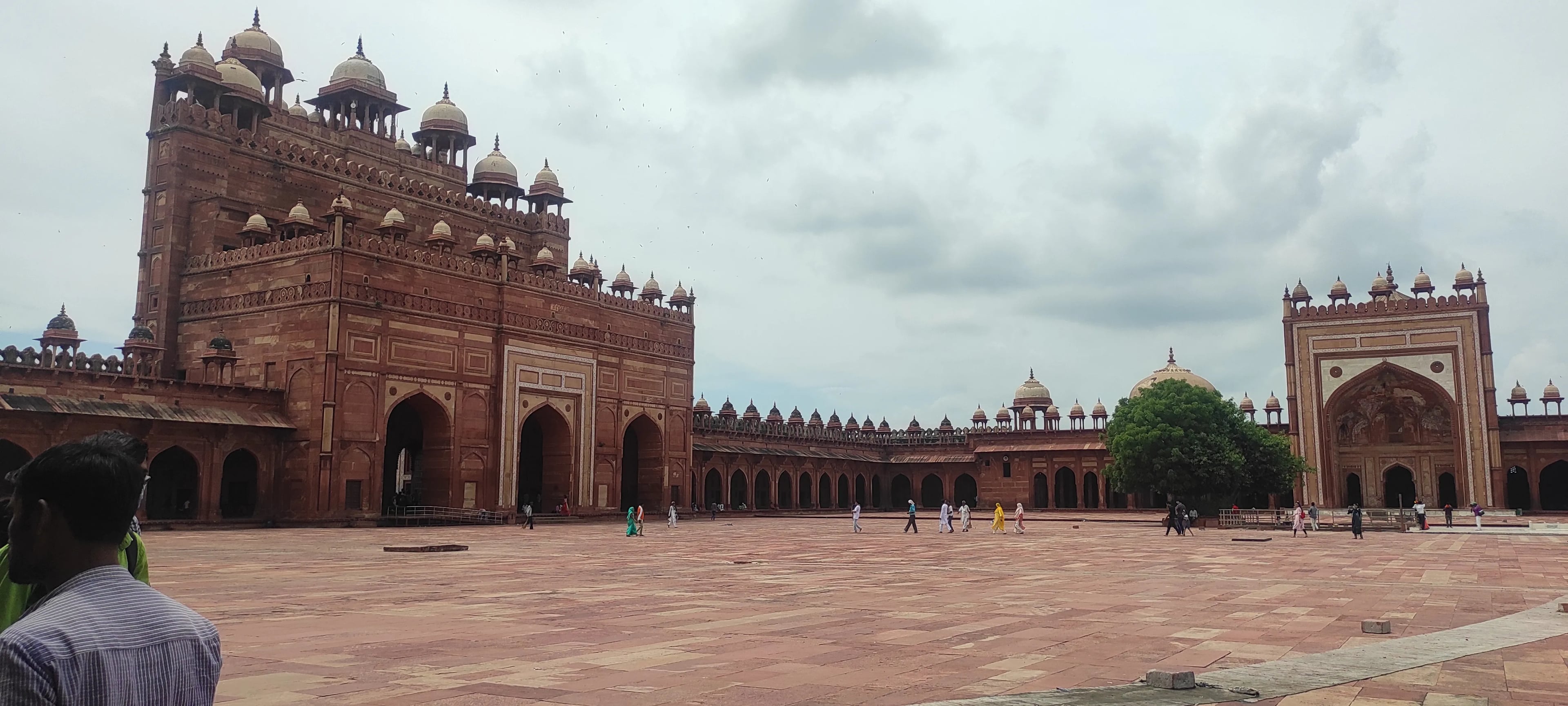
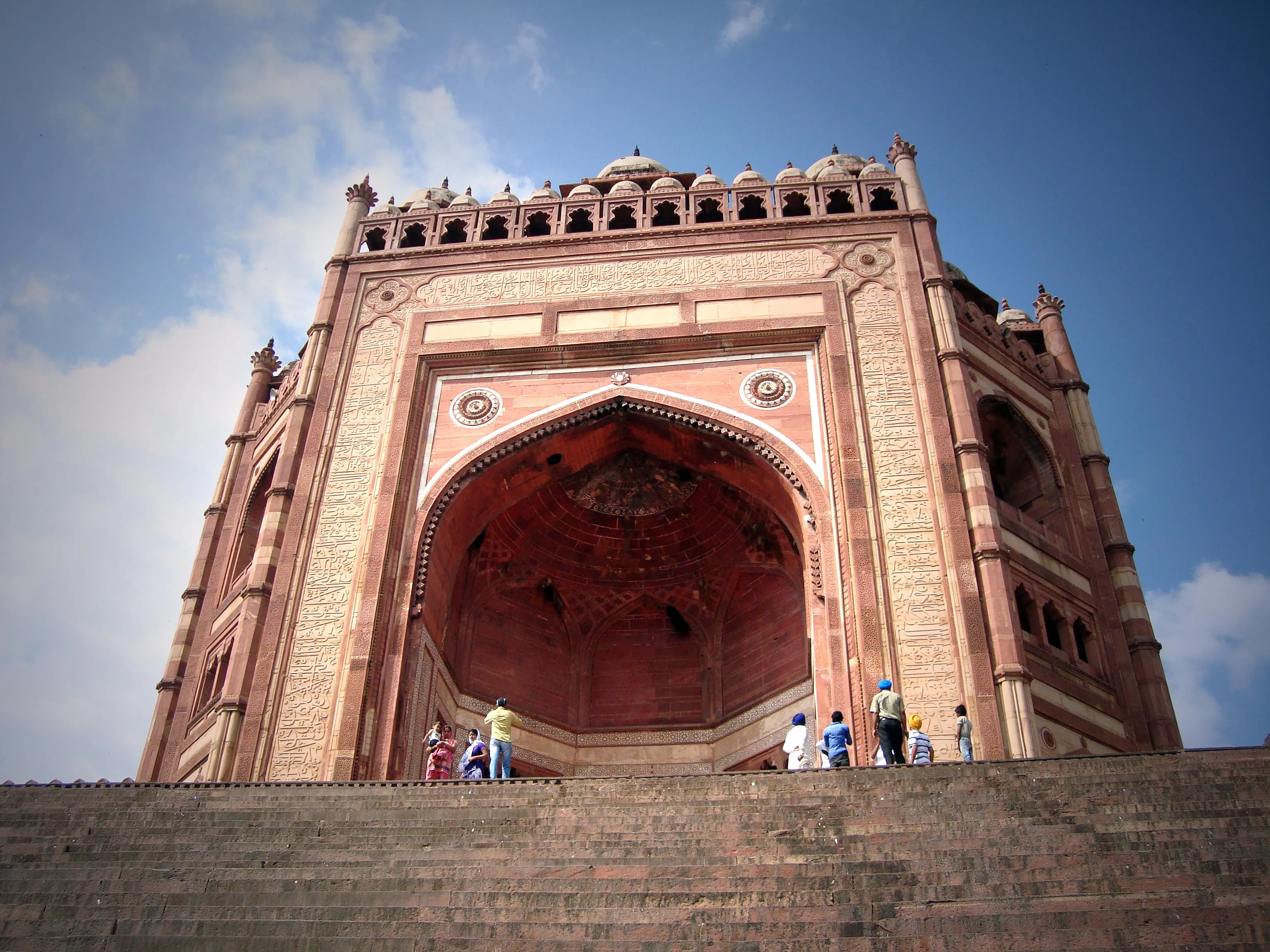
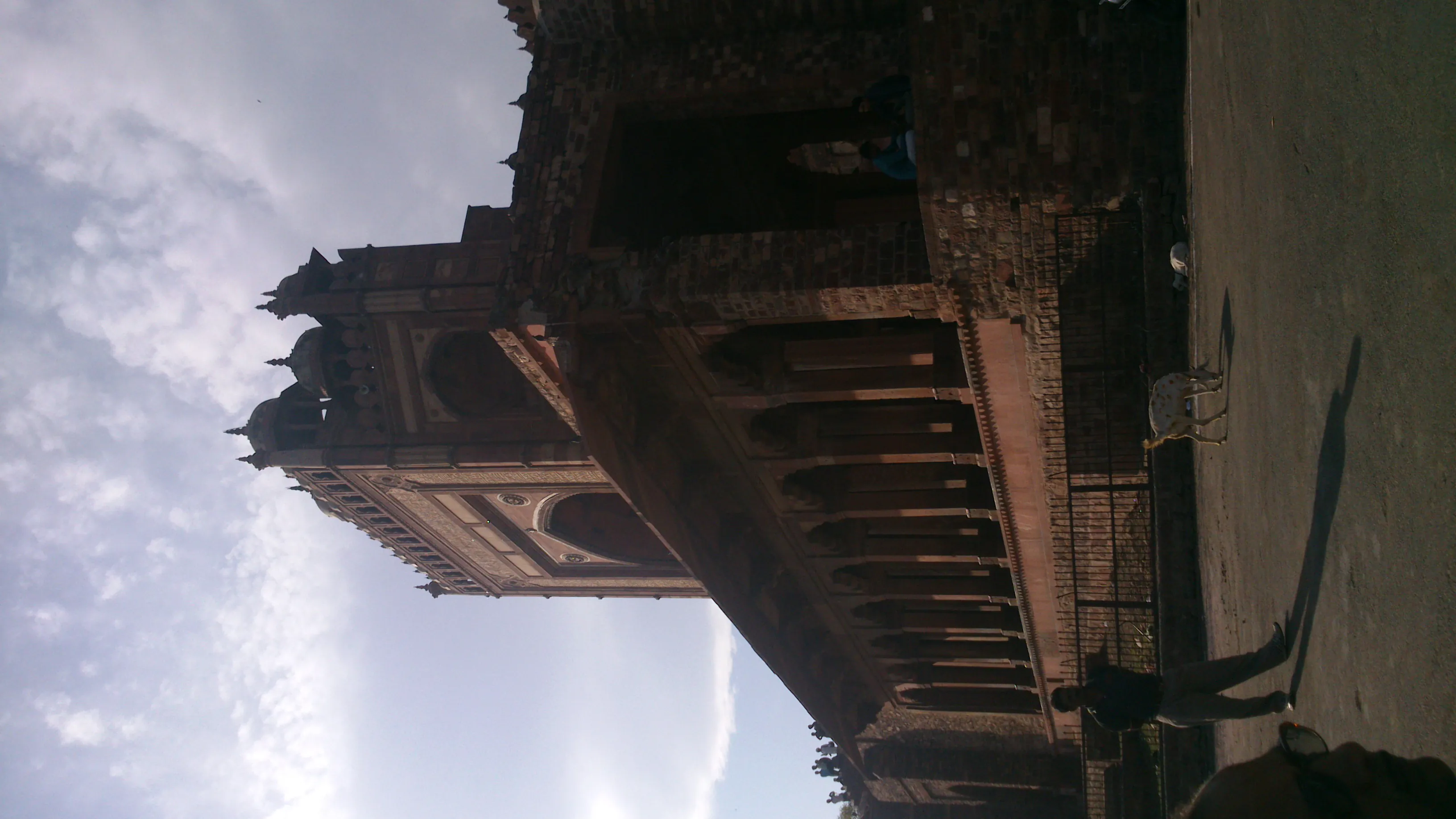
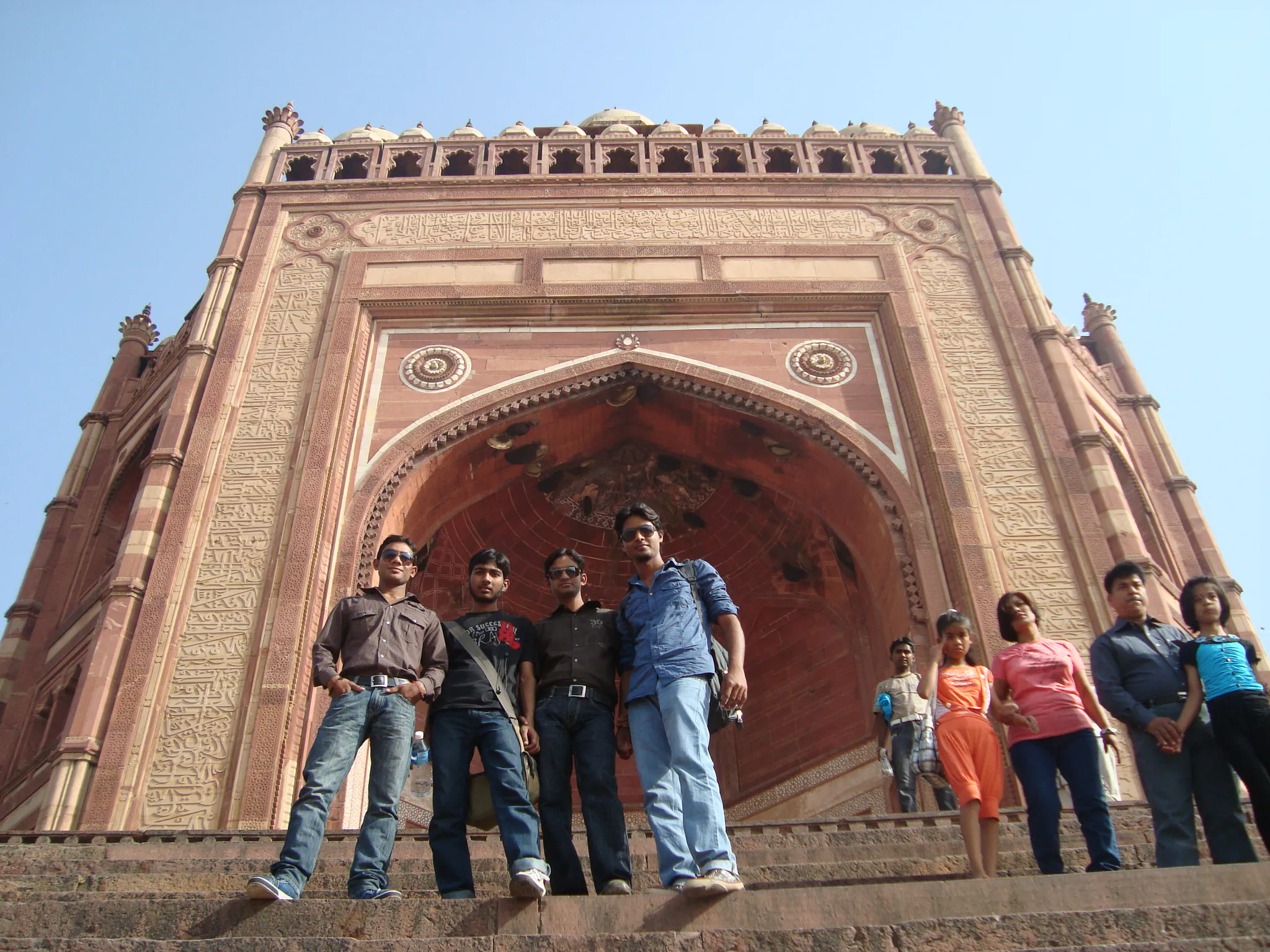
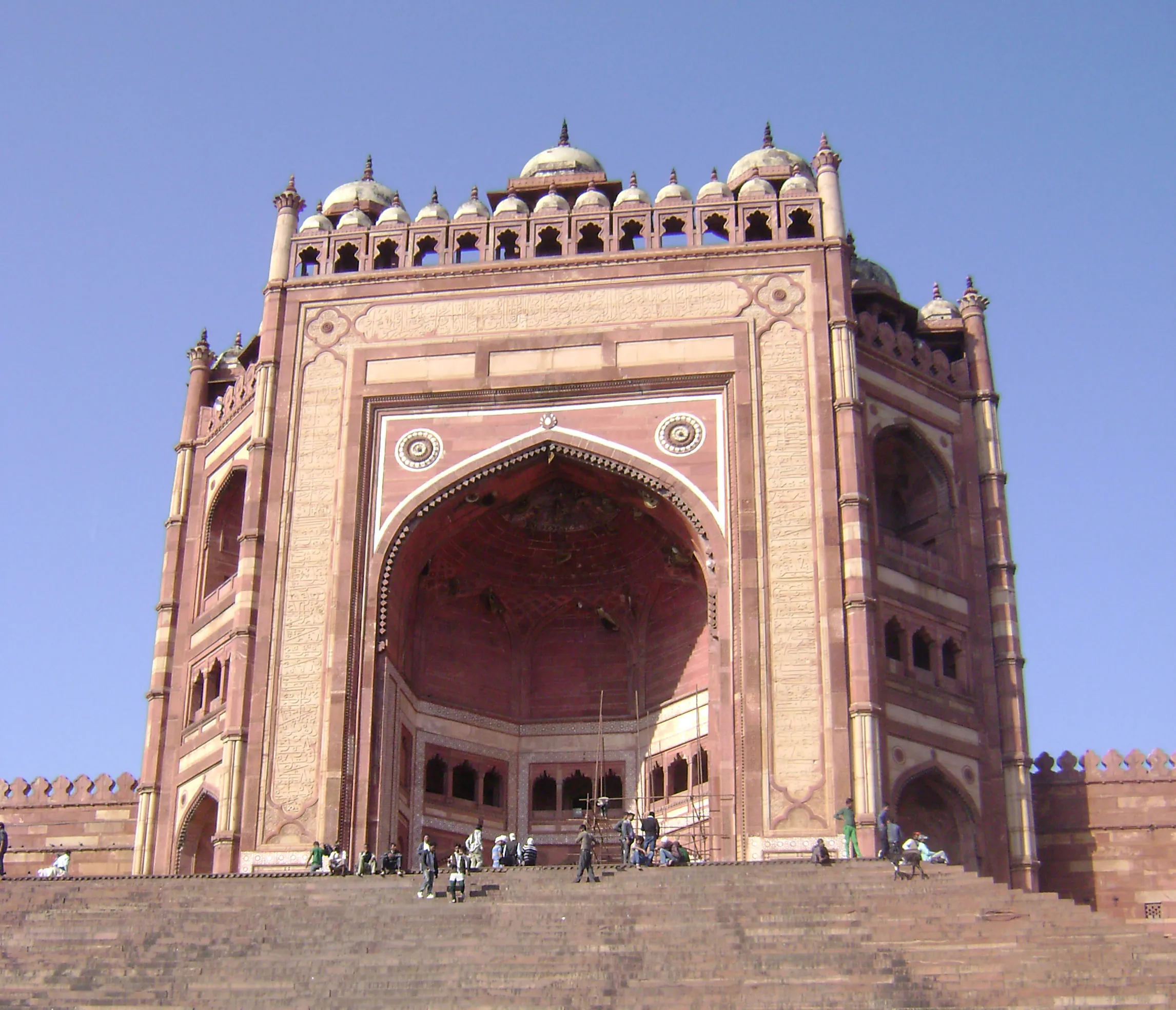
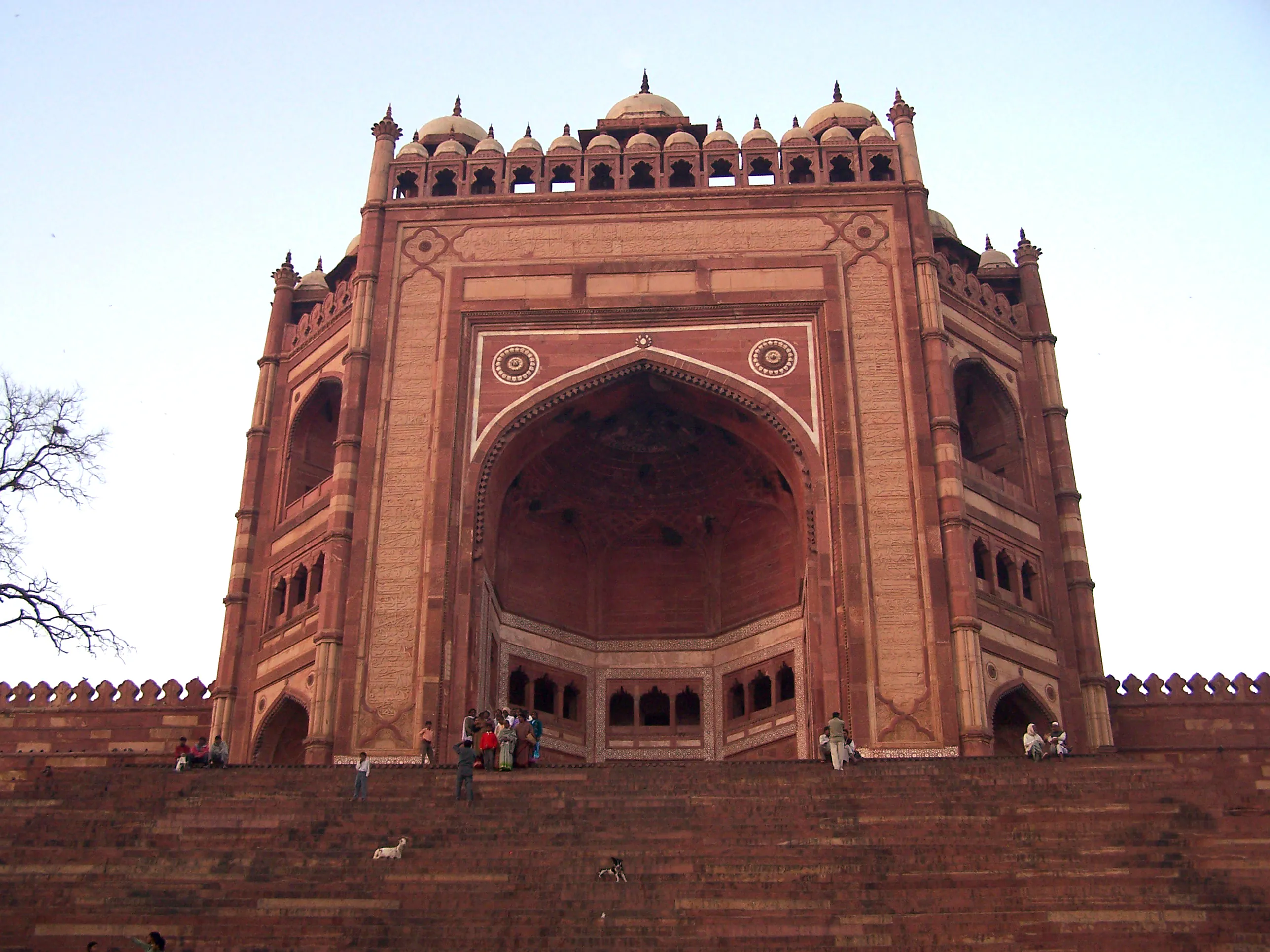
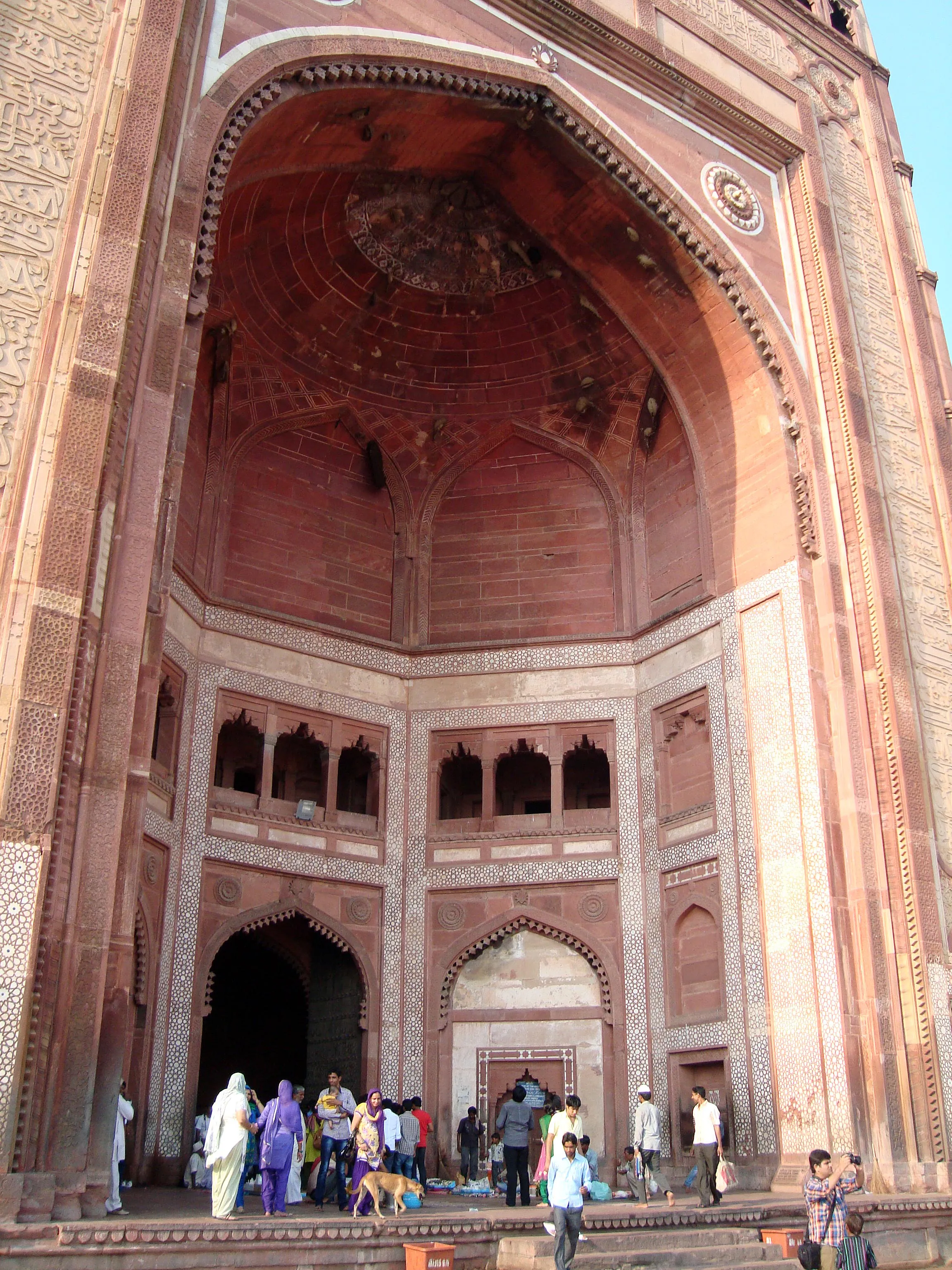
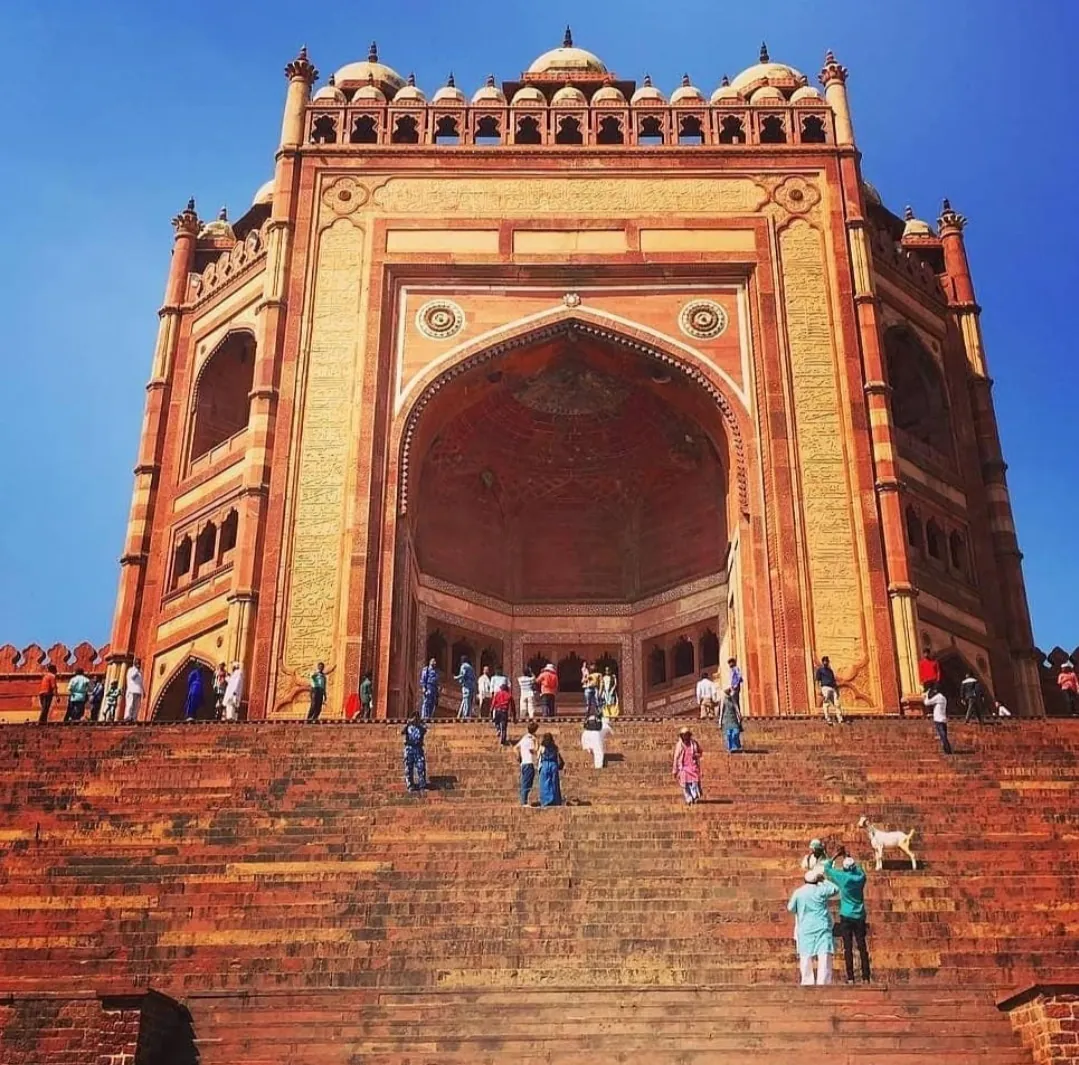
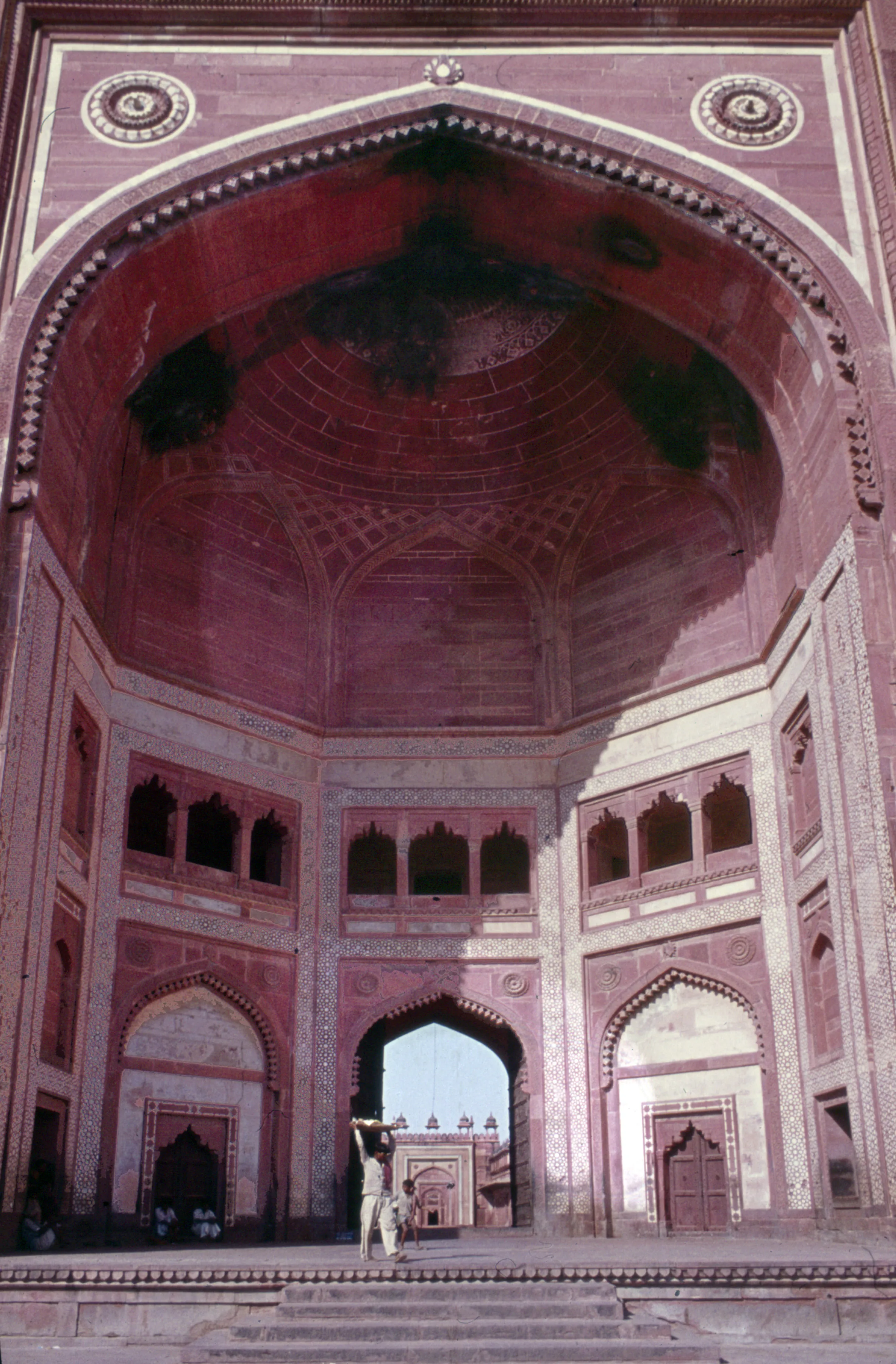
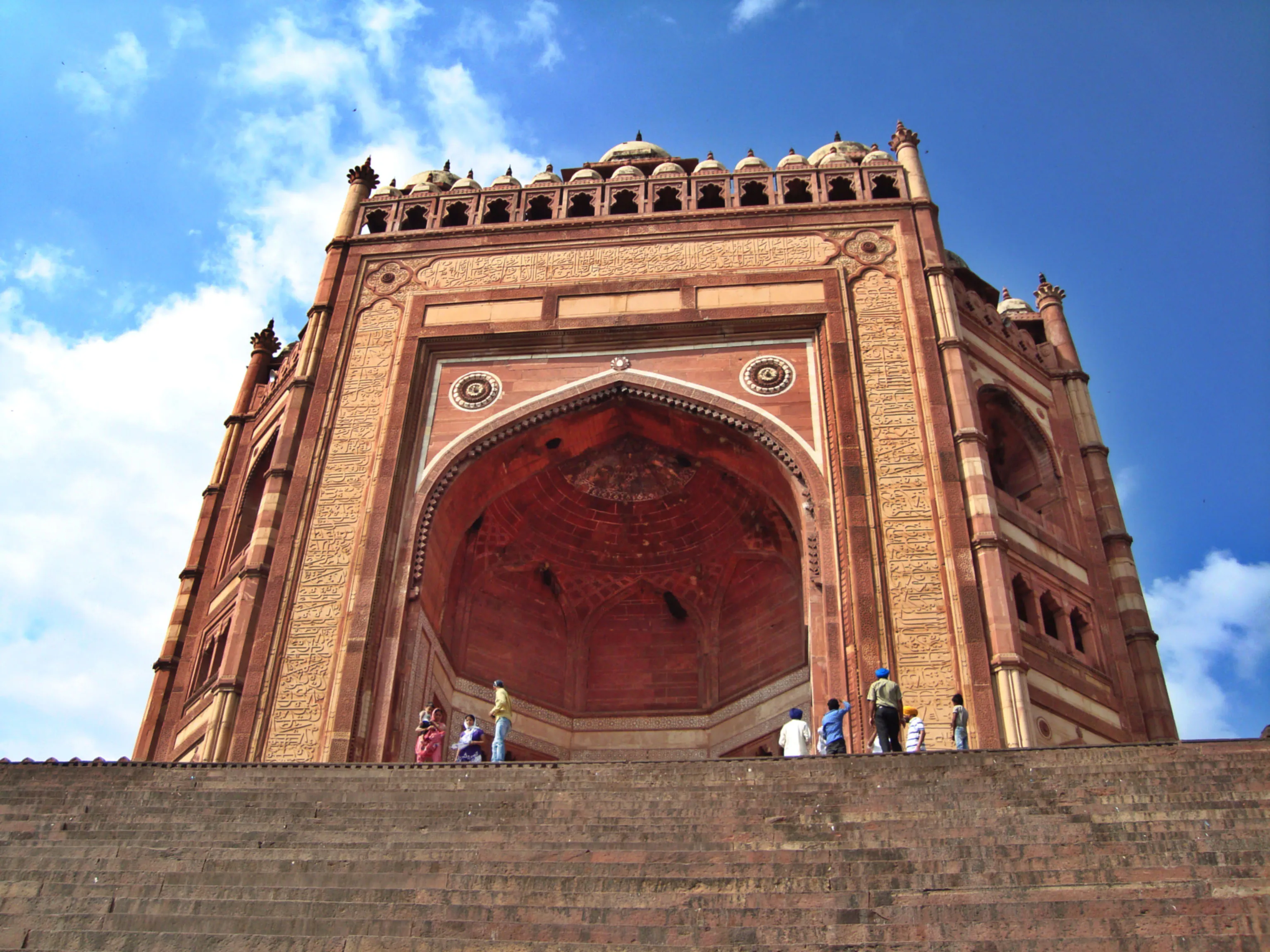
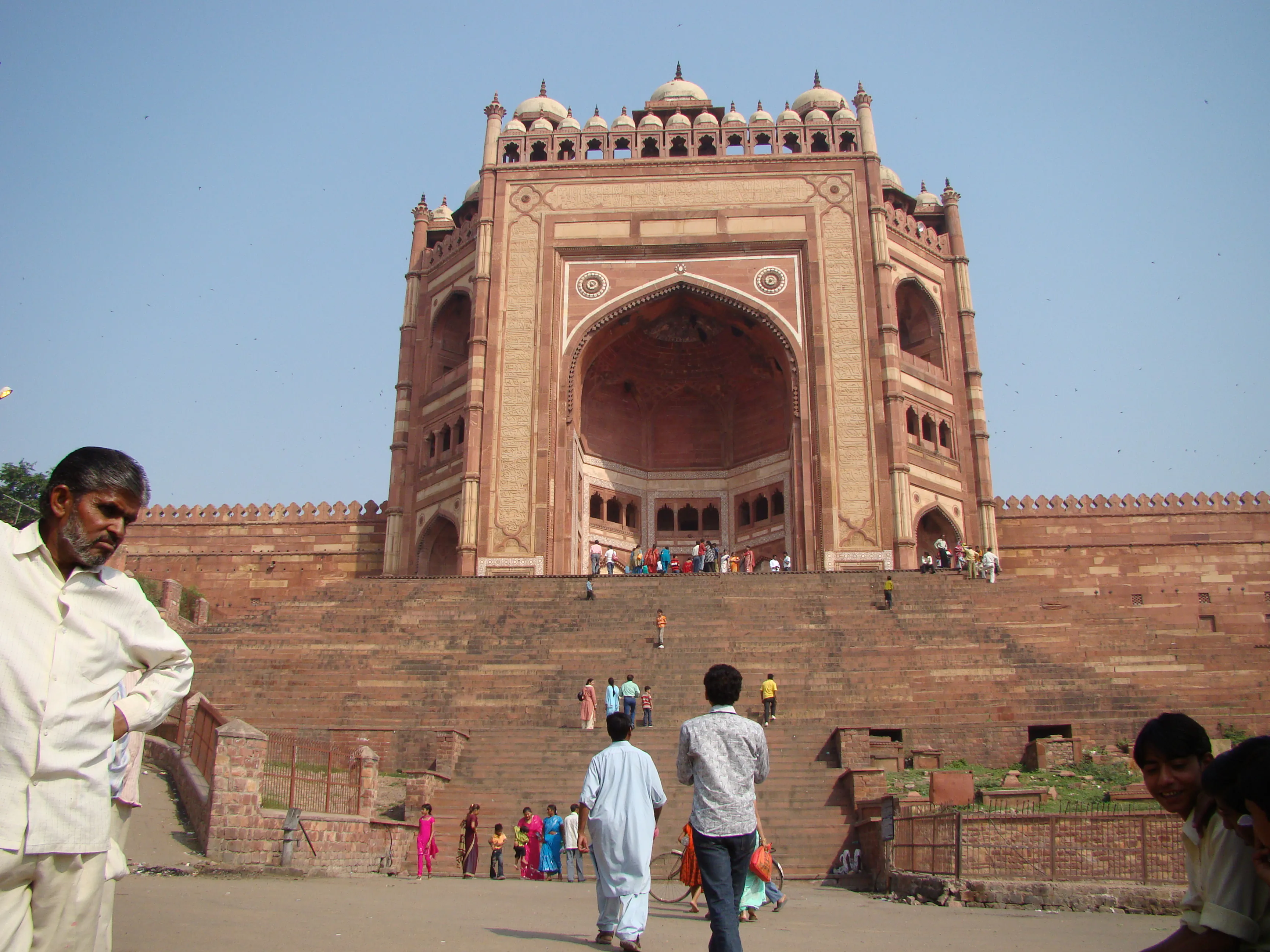
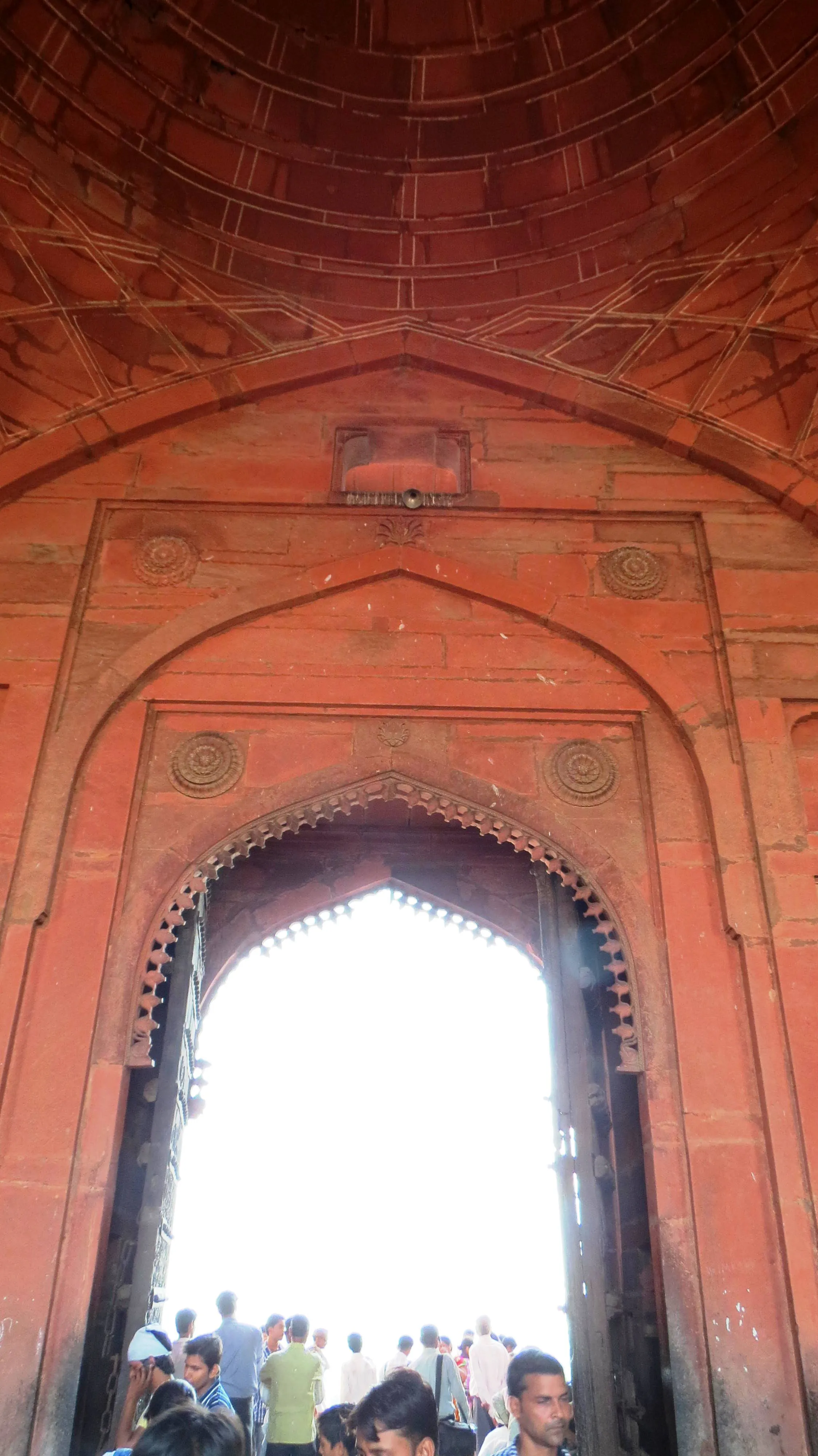
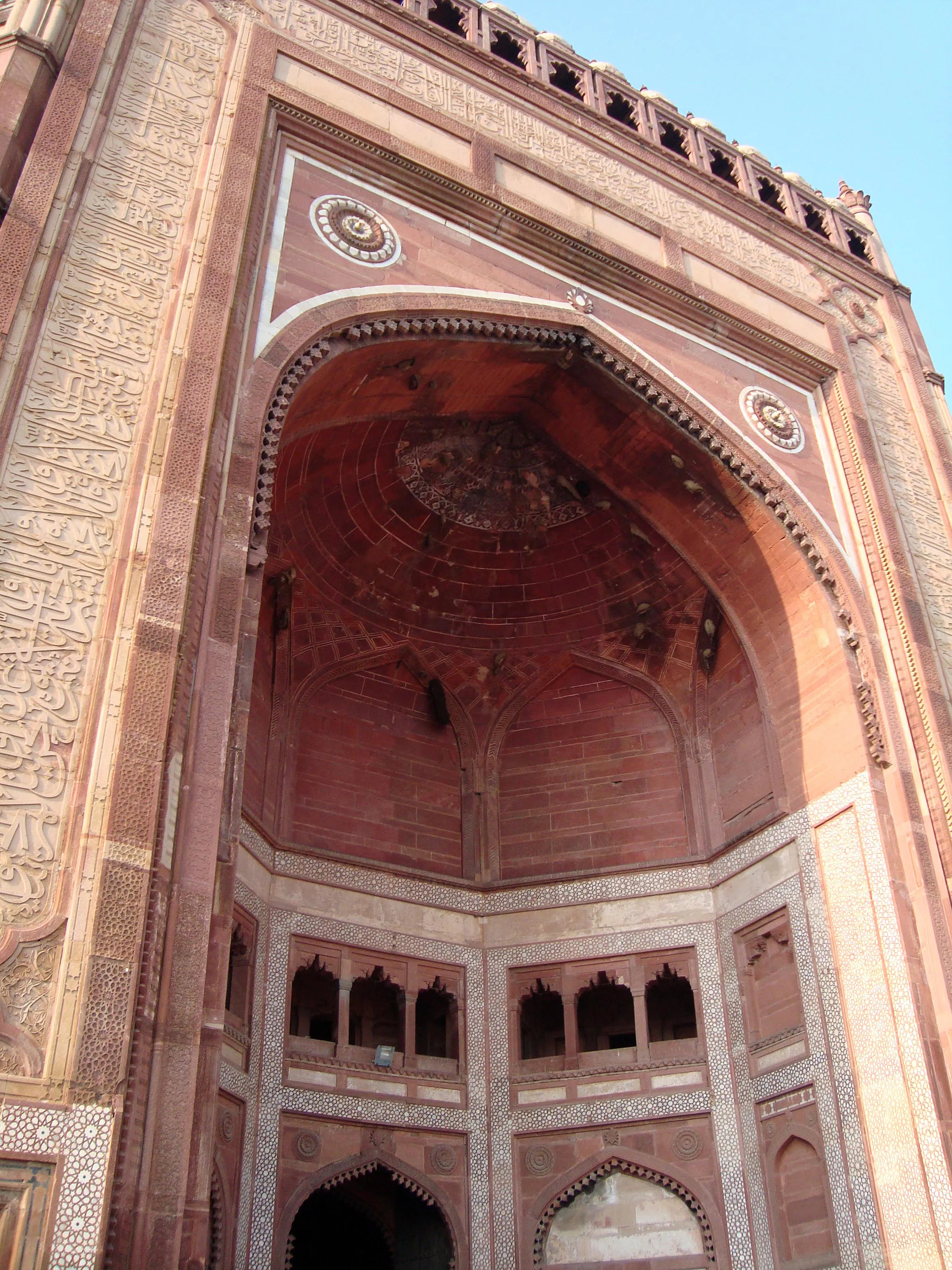
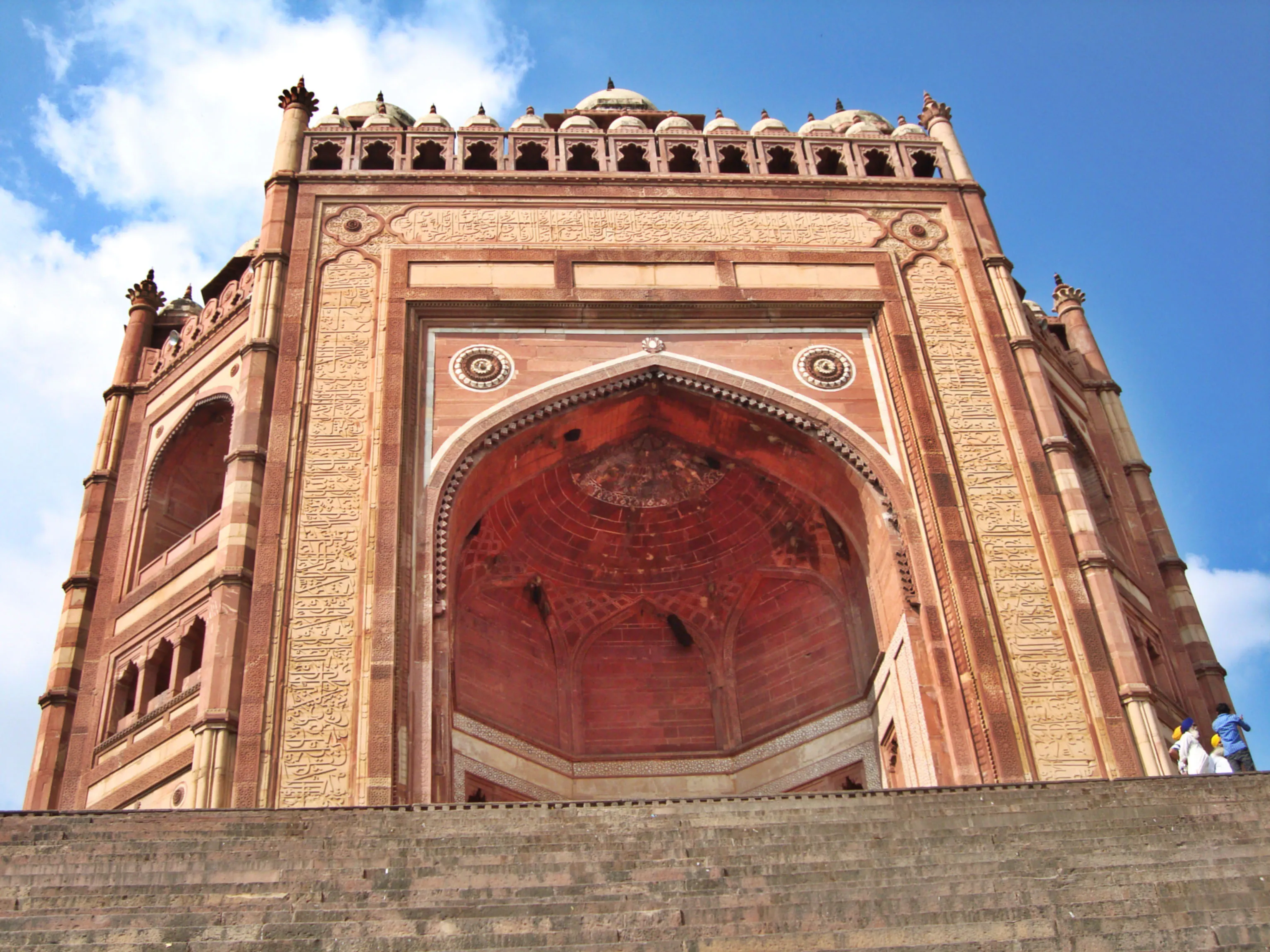
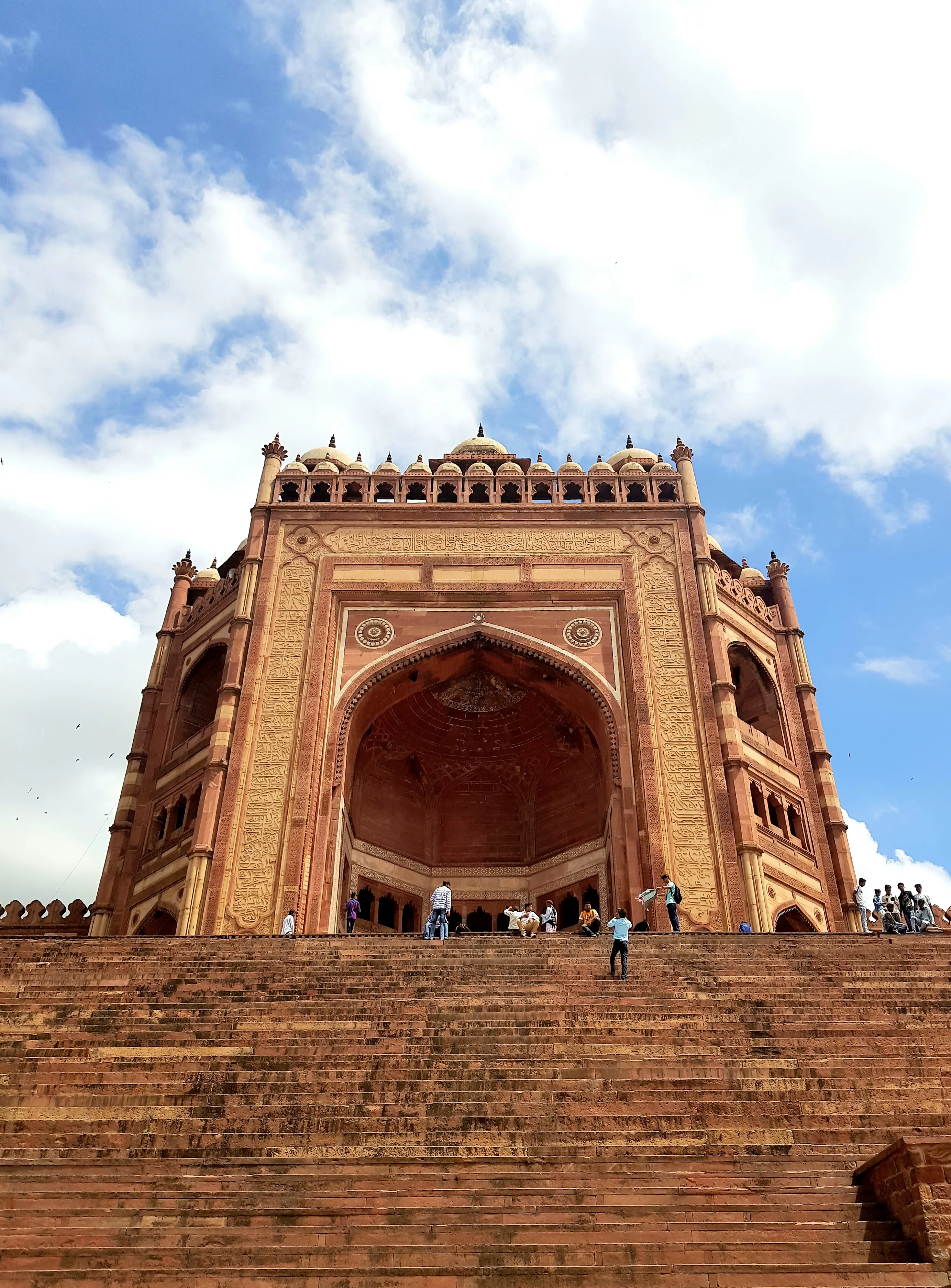
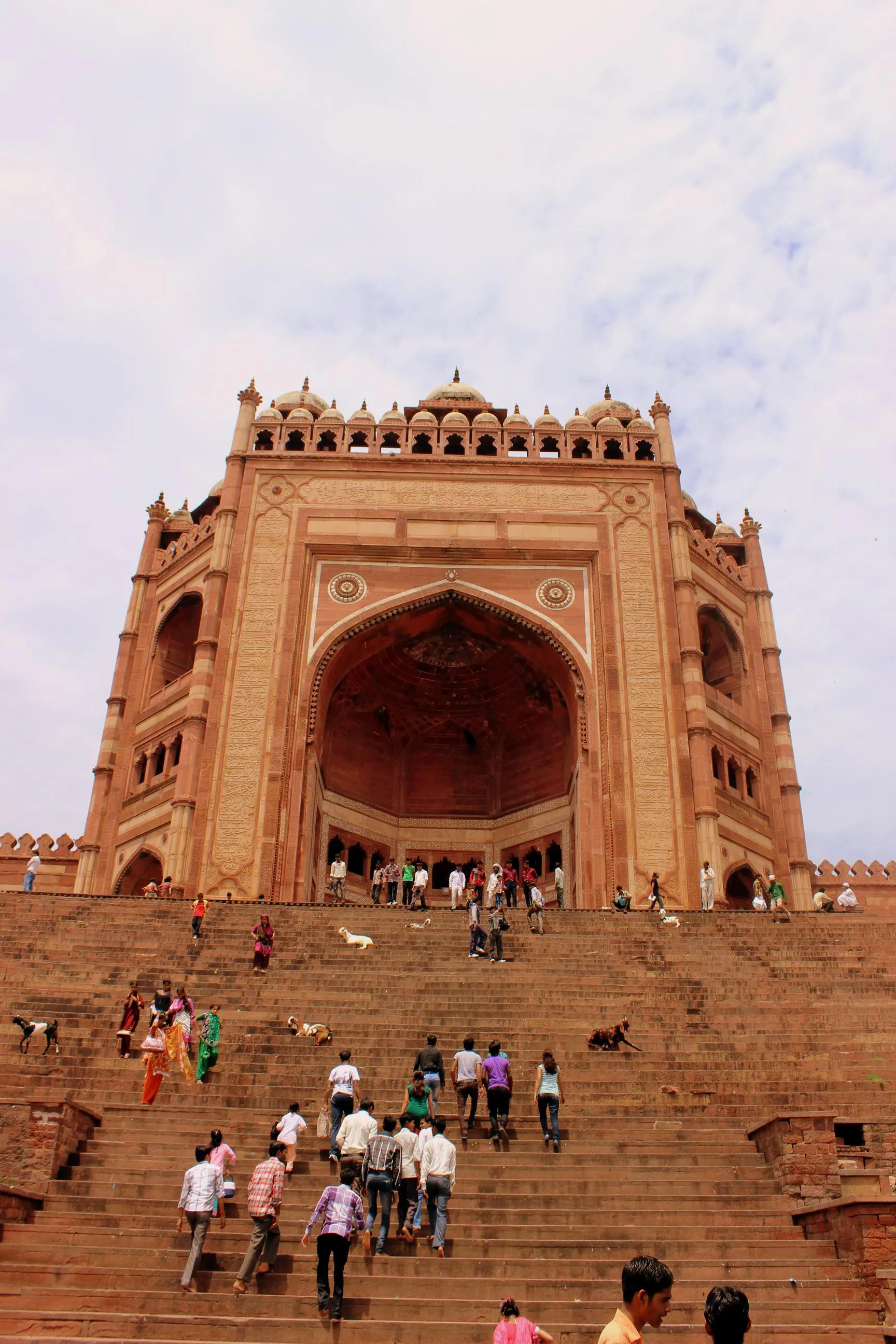
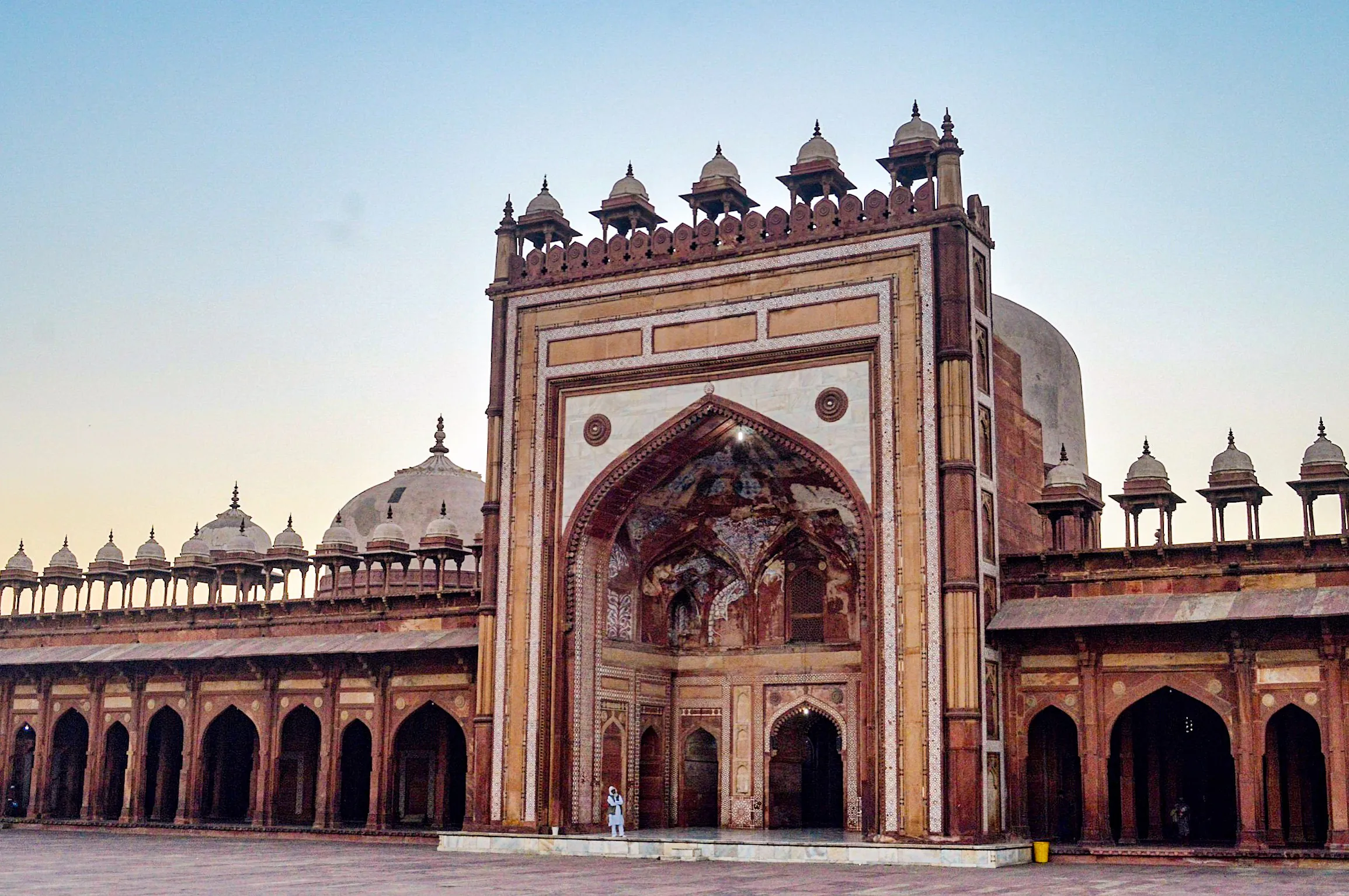
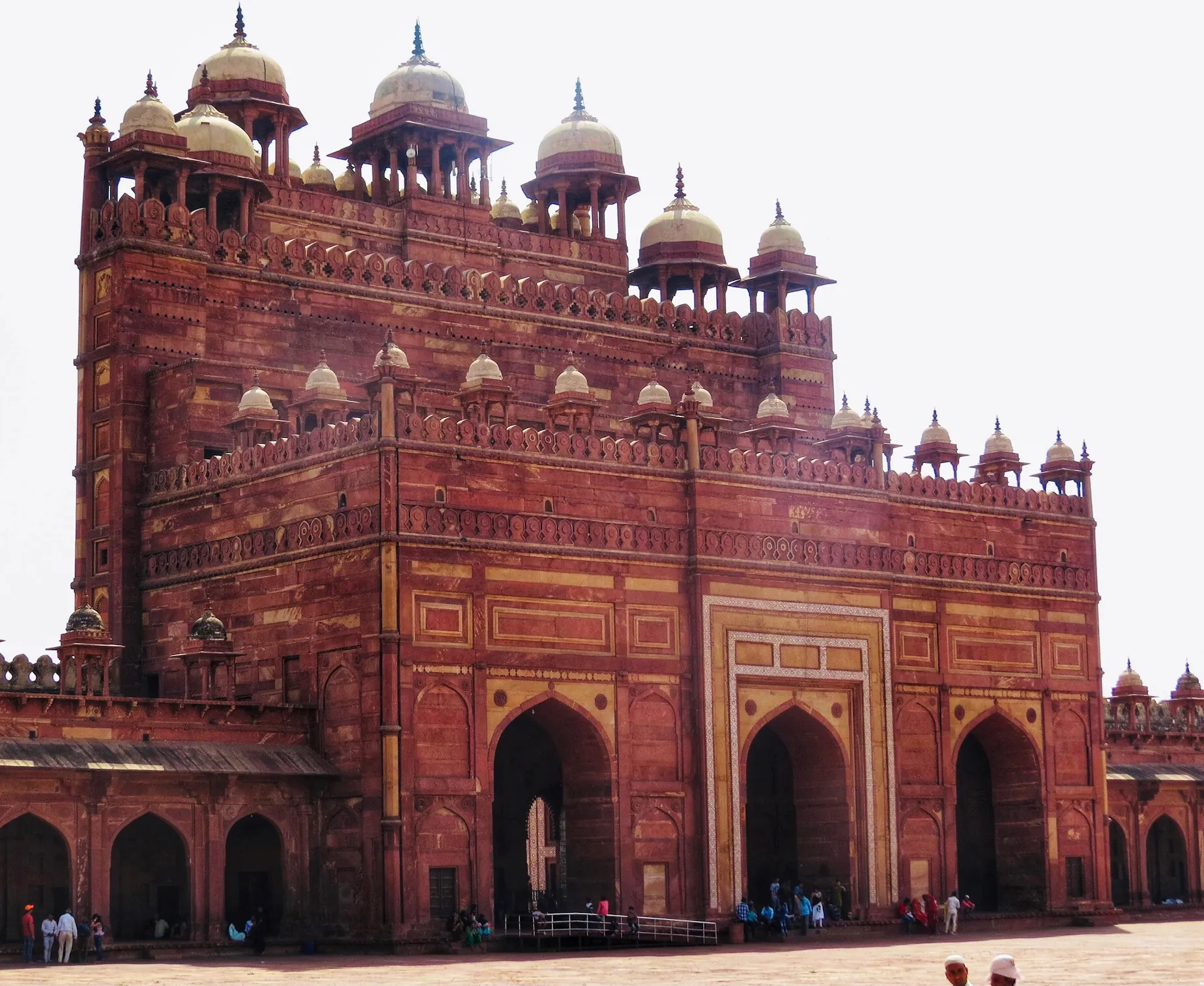
1 / 21
Buland Darwaza Fatehpur Sikri
Buland Darwaza, Agra, Fatehpur Sikri (283110), Uttar Pradesh, India
The sheer scale of Buland Darwaza hits you long before you reach its imposing shadow. Emerging from the gentle slopes surrounding Fatehpur Sikri, this colossal gateway, a reddish-brown sentinel against the Uttar Pradesh sky, feels less like an entrance and more like a declaration. Having crisscrossed North India for years, documenting its architectural marvels, I can confidently say few structures possess the immediate, breathtaking grandeur of Akbar’s victory arch.
My most recent visit to Fatehpur Sikri began, as it always does, with a sense of anticipation. The deserted city, a Mughal ghost town whispering stories of a glorious past, holds a particular fascination for me. But even after numerous visits, the Buland Darwaza still manages to evoke awe. Fifty-two meters high, it dwarfs everything around it, a testament to Mughal ambition and architectural prowess. The semi-circular steps leading up to the gateway already begin to prepare you for the sheer scale of what lies ahead.
Passing through the towering archway, I ran my hand over the intricately carved sandstone. The red sandstone, sourced from the nearby quarries, glows with a warmth that belies its age. The intricate calligraphy, primarily verses from the Quran, adds another layer of artistry. These inscriptions, deeply etched into the stone, are not mere decorations; they are proclamations of faith, chronicles of victory, and testaments to the artistic sensibilities of the era. I spent a considerable amount of time deciphering the Persian inscriptions, a tangible link to the Mughal emperors who once walked these very grounds.
The architectural style of Buland Darwaza is a fascinating blend of Persian and Indian influences. The towering arch, a characteristically Persian feature, is complemented by the chattris, small domed pavilions, which are distinctly Indian. This fusion of styles, so typical of Mughal architecture, is perhaps most perfectly realized in this magnificent gateway. The interplay of light and shadow on the carved surfaces creates a constantly shifting tapestry of textures, a visual feast for anyone with an appreciation for architectural detail.
Looking down from the gateway offers a panoramic view of Fatehpur Sikri, a city frozen in time. The Jama Masjid, the palaces, the courtyards – all spread out below like a meticulously crafted miniature. It's easy to imagine the bustling activity that once filled these spaces, the courtiers, the soldiers, the merchants, all moving within the confines of Akbar’s magnificent capital. Standing there, I felt a palpable connection to history, a sense of being a small part of a larger narrative that stretches back centuries.
One of the most striking features of the Buland Darwaza, and something that often goes unnoticed by casual observers, is the subtle shift in scale as you ascend. The lower portions of the gateway are proportionally larger, creating a sense of perspective and emphasizing the height. This clever architectural trick enhances the sense of grandeur and makes the gateway appear even taller than it actually is. It’s a testament to the ingenuity of the Mughal architects and their mastery of proportion and scale.
As the sun began to set, casting long shadows across the deserted city, I took one last look at the Buland Darwaza. The setting sun bathed the sandstone in a warm, golden light, accentuating the intricate carvings and giving the gateway an almost ethereal glow. It was a fitting end to my visit, a moment of quiet contemplation in the presence of a truly magnificent structure. The Buland Darwaza is more than just a gateway; it's a symbol of Mughal power, a testament to architectural brilliance, and a timeless reminder of India’s rich and layered history. For anyone traveling through North India, it is an absolute must-see.
Year Built
1601 CE, 17th Century
Period
Mughal Rajput Period
Architectural Style
Mughal architecture + Indo-Islamic + Persian, Indian, and Timurid influences.
Built By
Akbar
Material Used
Red Sandstone, Marble, Mortar, Timber
Heritage Status
Protected Monument of National Importance (ASI)
Buland Darwaza Fatehpur Sikri
overview
Overview data: 94% complete
Heritage Overview
Gateway
Buland Darwaza Fatehpur Sikri
The sheer scale of Buland Darwaza hits you long before you reach its imposing shadow. Emerging from the gentle slopes surrounding Fatehpur Sikri, this colossal gateway, a reddish-brown sentinel against the Uttar Pradesh sky, feels less like an entrance and more like a declaration. Having crisscrossed North India for years, documenting its architectural marvels, I can confidently say few structures possess the immediate, breathtaking grandeur of Akbar’s victory arch.
My most recent visit to Fatehpur Sikri began, as it always does, with a sense of anticipation. The deserted city, a Mughal ghost town whispering stories of a glorious past, holds a particular fascination for me. But even after numerous visits, the Buland Darwaza still manages to evoke awe. Fifty-two meters high, it dwarfs everything around it, a testament to Mughal ambition and architectural prowess. The semi-circular steps leading up to the gateway already begin to prepare you for the sheer scale of what lies ahead.
Passing through the towering archway, I ran my hand over the intricately carved sandstone. The red sandstone, sourced from the nearby quarries, glows with a warmth that belies its age. The intricate calligraphy, primarily verses from the Quran, adds another layer of artistry. These inscriptions, deeply etched into the stone, are not mere decorations; they are proclamations of faith, chronicles of victory, and testaments to the artistic sensibilities of the era. I spent a considerable amount of time deciphering the Persian inscriptions, a tangible link to the Mughal emperors who once walked these very grounds.
The architectural style of Buland Darwaza is a fascinating blend of Persian and Indian influences. The towering arch, a characteristically Persian feature, is complemented by the chattris, small domed pavilions, which are distinctly Indian. This fusion of styles, so typical of Mughal architecture, is perhaps most perfectly realized in this magnificent gateway. The interplay of light and shadow on the carved surfaces creates a constantly shifting tapestry of textures, a visual feast for anyone with an appreciation for architectural detail.
Looking down from the gateway offers a panoramic view of Fatehpur Sikri, a city frozen in time. The Jama Masjid, the palaces, the courtyards – all spread out below like a meticulously crafted miniature. It's easy to imagine the bustling activity that once filled these spaces, the courtiers, the soldiers, the merchants, all moving within the confines of Akbar’s magnificent capital. Standing there, I felt a palpable connection to history, a sense of being a small part of a larger narrative that stretches back centuries.
One of the most striking features of the Buland Darwaza, and something that often goes unnoticed by casual observers, is the subtle shift in scale as you ascend. The lower portions of the gateway are proportionally larger, creating a sense of perspective and emphasizing the height. This clever architectural trick enhances the sense of grandeur and makes the gateway appear even taller than it actually is. It’s a testament to the ingenuity of the Mughal architects and their mastery of proportion and scale.
As the sun began to set, casting long shadows across the deserted city, I took one last look at the Buland Darwaza. The setting sun bathed the sandstone in a warm, golden light, accentuating the intricate carvings and giving the gateway an almost ethereal glow. It was a fitting end to my visit, a moment of quiet contemplation in the presence of a truly magnificent structure. The Buland Darwaza is more than just a gateway; it's a symbol of Mughal power, a testament to architectural brilliance, and a timeless reminder of India’s rich and layered history. For anyone traveling through North India, it is an absolute must-see.
Location
Buland Darwaza, Agra, Fatehpur Sikri (283110), Uttar Pradesh, India(Uttar Pradesh)
Year Built
1601 CE, 17th Century
Heritage Status
Protected Monument of National Importance (ASI)
Visit Information
Visiting Hours
Buland Darwaza: Sunrise - Sunset, Daily.
Entry Fee
Free entry for all.
Heritage Status
Protected Monument of National Importance (ASI)
Preservation Status
Good, well-maintained with ongoing conservation efforts
Historical Context
The imposing Buland Darwaza, or "Gate of Magnificence," stands as a colossal testament to Mughal emperor Akbar's military prowess and architectural ambition. Its construction, commencing in 1572 and completed in 1575, was directly linked to Akbar's triumphant Deccan campaign, specifically his victory over the Gujarati sultanate in 1573. This wasn't merely a celebratory arch; it served as the grand southern entrance to the Jama Masjid at Fatehpur Sikri, Akbar's newly established capital city near Agra. The gate's very existence is intertwined with the story of this short-lived but architecturally significant Mughal capital.
Akbar, after years of yearning for an heir, visited the Sufi saint Salim Chishti in Sikri. Chishti blessed him, and soon after, Prince Salim, the future Emperor Jahangir, was born. Overwhelmed with gratitude, Akbar decided to shift his capital from Agra to Sikri, renaming it Fatehpur Sikri, the "City of Victory." The construction of the city, including the Jama Masjid and subsequently the Buland Darwaza, began almost immediately, showcasing the opulence and power of the Mughal empire at its zenith. The choice of sandstone, readily available in the region, further cemented the connection between the monument and its geographical context.
The Buland Darwaza's construction reflects the syncretic nature of Akbar's reign and the Mughal Rajput period. While fundamentally Islamic in its function as a mosque entrance, the gate incorporates architectural elements from various traditions prevalent in the Indian subcontinent. The towering archway, a hallmark of Islamic architecture, is complemented by intricate carvings and embellishments reminiscent of Rajput and Persian artistic styles. This fusion of styles, a characteristic of Akbar's reign, symbolized his vision of a unified empire transcending religious and cultural divides. He actively encouraged interfaith dialogue and appointed Rajput nobles to high positions in his court, fostering a period of relative harmony and cultural exchange.
The inscription on the Buland Darwaza further illuminates the historical context. It proclaims Akbar's victory over Gujarat and subtly alludes to his religious tolerance. While acknowledging the Islamic faith, the inscription also incorporates verses from the Quran that emphasize universal brotherhood and peace, reflecting Akbar's own evolving religious philosophy, Din-i Ilahi, which sought to harmonize elements from different faiths. This inscription, etched in stone, serves as a permanent record of Akbar's reign and his ideological leanings.
The sheer scale of the Buland Darwaza, standing at 54 meters high, was intended to inspire awe and signify Mughal dominance. Visitors approaching Fatehpur Sikri from the south would have been immediately confronted by this monumental gateway, a powerful symbol of imperial authority. The gate's height also had a symbolic significance, representing Akbar's elevated status as a divinely ordained ruler. This concept of divine kingship was further reinforced by the overall layout of Fatehpur Sikri, with the palace complex situated on higher ground, overlooking the city and the surrounding plains.
The subsequent decline of Fatehpur Sikri, abandoned just 14 years after its completion due to water scarcity, adds another layer to the Buland Darwaza's story. While the city fell into disuse, the gate remained, a solitary sentinel bearing witness to the rise and fall of a magnificent Mughal capital. Today, the Buland Darwaza stands not only as a testament to Akbar's military triumphs and architectural vision but also as a poignant reminder of the transient nature of power and the enduring legacy of the Mughal Rajput period in shaping India's cultural landscape. It serves as a tangible link to a pivotal era in Indian history, inviting visitors to reflect on the complex interplay of religion, politics, and art that defined Akbar's reign and the Mughal empire at its peak.
Archaeological Survey
Archaeological Survey of India (ASI), Uttar Pradesh State Archaeology Department
Architectural Details
Mughal architecture + Indo-Islamic + Persian, Indian, and Timurid influences.
Mughal Rajput Period
Built by
Akbar
Materials
Red Sandstone, Marble, Mortar, Timber
Dimensions
Height53.63m
Width15.5m
Length53.63m
Area2500m²
Location Map
Featured Images
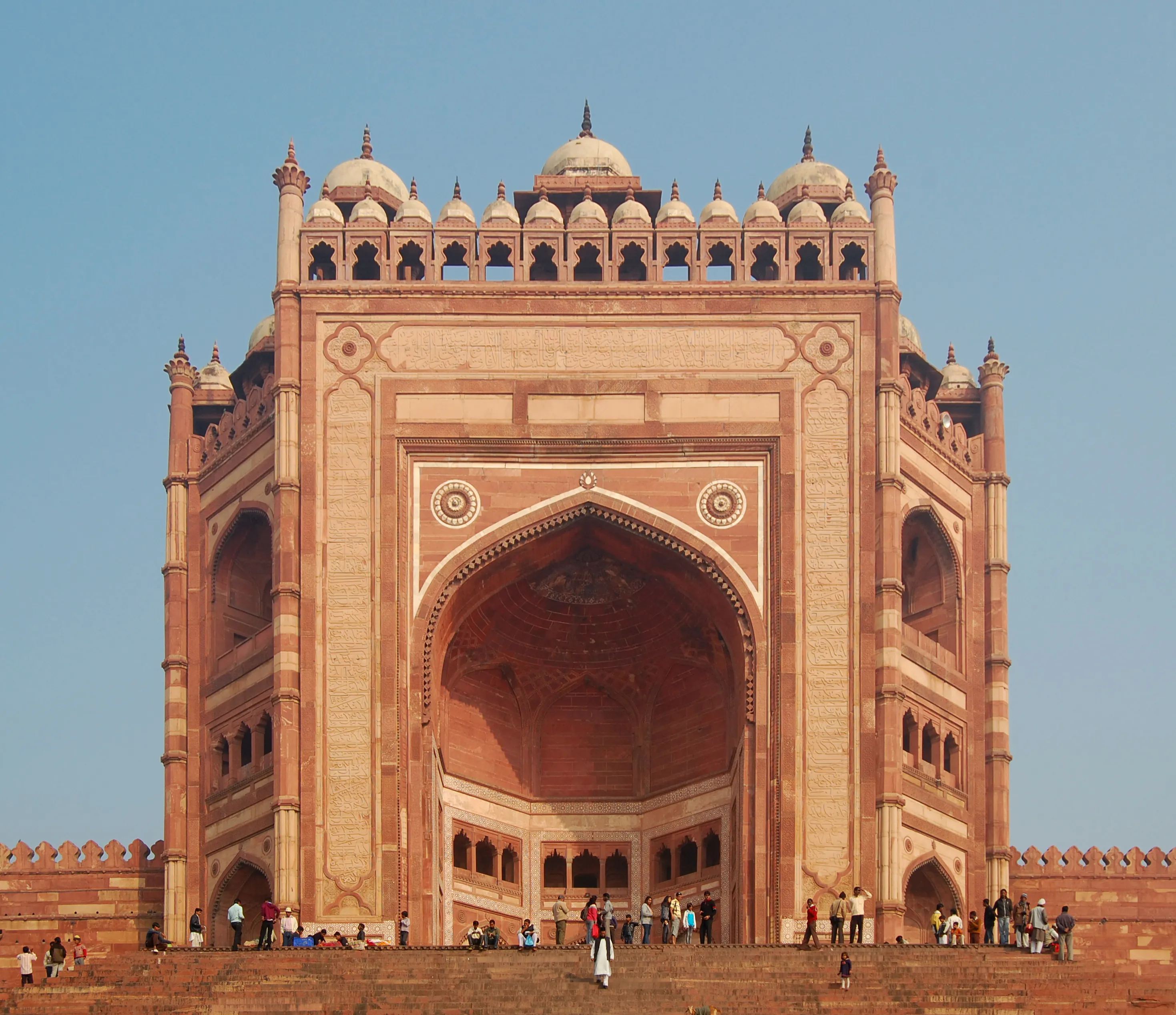
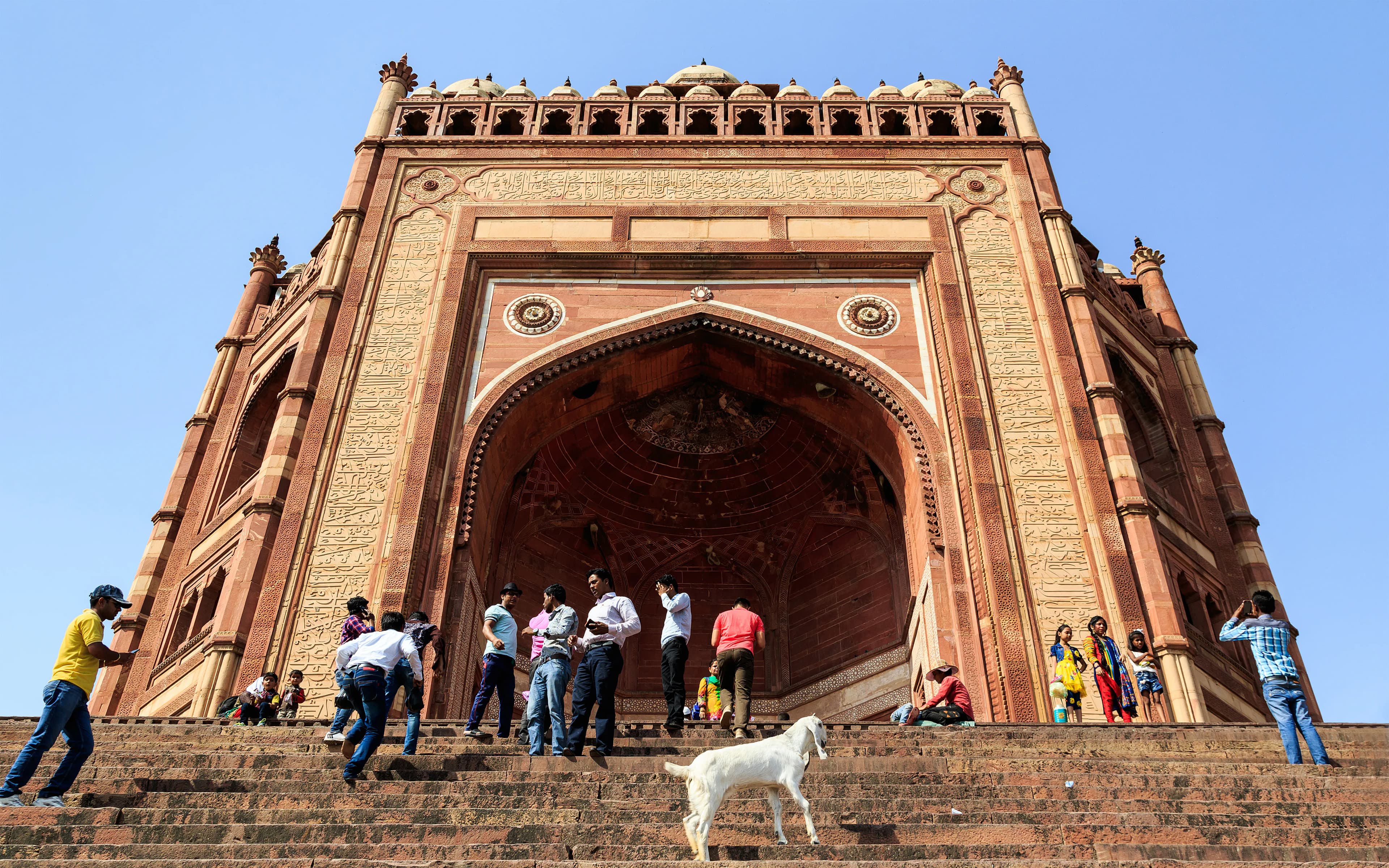
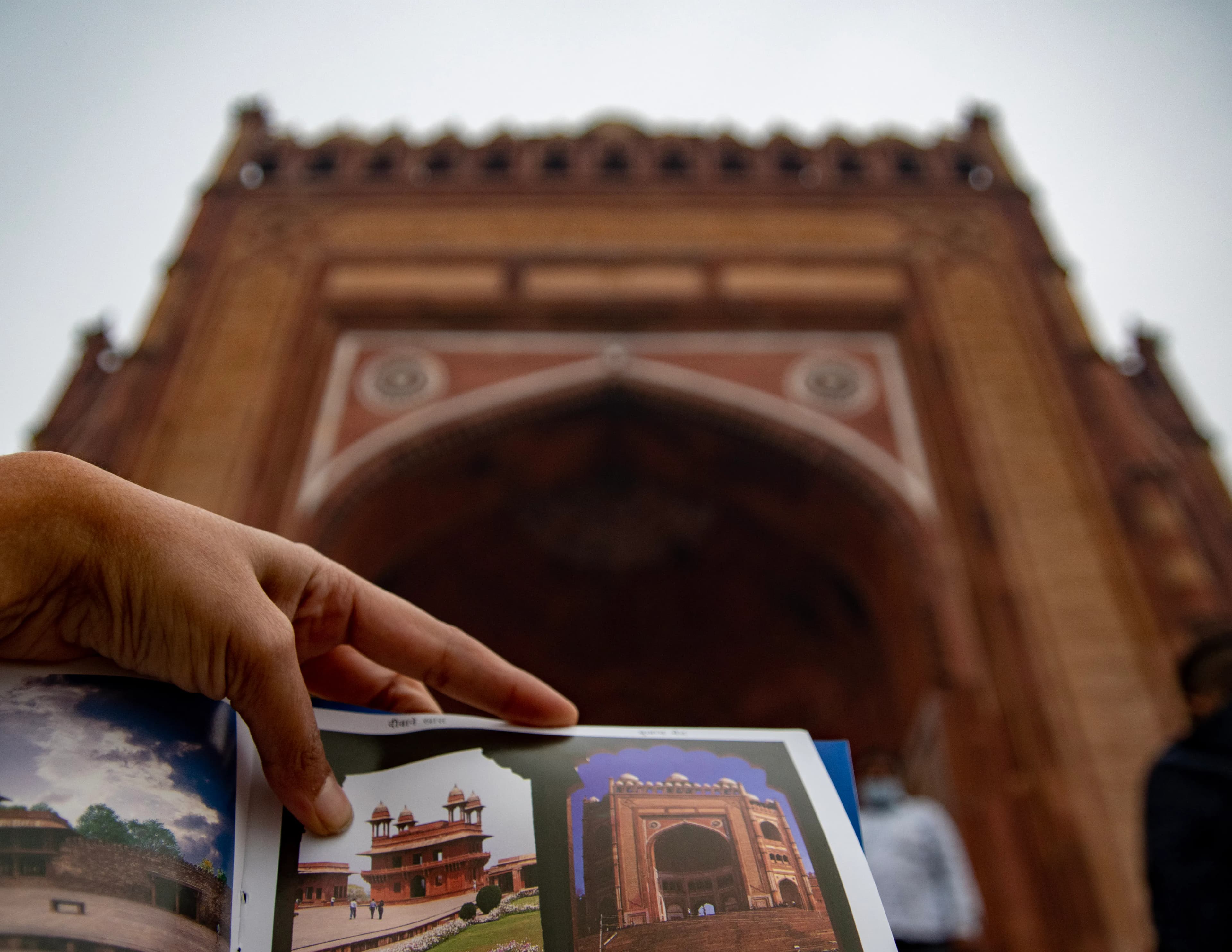

Excavation Details
As I poured over archaeological reports from Fatehpur Sikri, I found surprisingly little dedicated excavation focused *specifically* on Buland Darwaza. Construction details are well-documented, but excavations primarily concentrate on the surrounding city complex, revealing domestic structures, workshops, and evidence of Mughal daily life, offering context for the gateway's grandeur within Akbar's planned capital. No major artifacts are recorded as found directly beneath the Darwaza itself.
Restoration Work
Buland Darwaza, at Fatehpur Sikri, has undergone several restorations. Early efforts focused on structural stabilization, addressing issues like weathering and decay. Later work included cleaning, repairing damaged stonework, and conservation of surface decorations. The Archaeological Survey of India (ASI) has overseen these projects, employing traditional techniques alongside modern scientific methods to preserve this magnificent gateway.
Patronage
Akbar the Great
Construction Technique
Having clambered every inch of this colossal gateway, I've witnessed firsthand the Mughal mastery. Red sandstone blocks, meticulously dressed and fitted, rise in perfect symmetry, anchored by iron dowels and clamped with mortar. A testament to skilled craftsmanship, no wonder it stands so proudly after centuries.
Architectural Influences
8 items
Building Techniques
The Buland Darwaza at Fatehpur Sikri showcases sophisticated Mughal construction techniques. The foundation, likely laid on compacted earth and rubble, supports the immense sandstone structure. Given the semi-arid climate, deep foundations weren't as crucial as in regions with fluctuating water tables. However, the builders likely incorporated a sloping plinth and drainage systems to manage monsoon runoff and prevent water damage to the sandstone. This environmental sensitivity is further evident in the gateway's orientation, maximizing shade and ventilation. The red sandstone blocks, quarried locally, were dressed and shaped with precision using traditional tools. Their large size and weight demanded ingenious lifting mechanisms, possibly employing timber scaffolding, ropes, and pulleys. The blocks interlock without mortar in some sections, demonstrating advanced dry masonry techniques. Elsewhere, a lime-based mortar, potentially incorporating local additives for enhanced strength and durability, binds the sandstone. Iron dowels and clamps, though susceptible to corrosion over time, reinforce critical joints, particularly at arches and lintels, counteracting tensile stresses. The use of marble, primarily for decorative elements and inscriptions, adds aesthetic value and highlights the Mughal penchant for intricate detailing. The timber, likely used for temporary scaffolding and centering during arch construction, played a crucial, albeit temporary, role in the gateway's creation. The combination of these materials and techniques, coupled with skilled craftsmanship, explains the Buland Darwaza's structural integrity and enduring grandeur despite centuries of exposure to the elements.
Coordinates
27.091500, 77.692600
Accessibility Info
{"notes":"Buland Darwaza is a grand gateway, part of the Fatehpur Sikri complex. It involves a climb of many steps to reach the main gate. The complex itself is spread out, requiring considerable walking. Be prepared for crowds, especially during peak season. Modest attire is recommended as it is a historical site with religious significance. Guides are available at the entrance and can be helpful for navigating the complex and understanding its history. Negotiate prices beforehand. Carry water and wear comfortable shoes.","restrooms":"Available near the entrance of Fatehpur Sikri complex, but may not be easily accessible within the immediate vicinity of Buland Darwaza itself. Conditions can vary.","wheelchair_accessible":"Limited. The steps to Buland Darwaza make it inaccessible to wheelchair users. The complex itself has uneven terrain, making navigation challenging for wheelchair users. Some areas within the Fatehpur Sikri complex may be more accessible than others, but overall accessibility is limited."}
Visitor Facilities
9 items
Best Visit Times
For optimal viewing of Buland Darwaza's intricate details, visit Fatehpur Sikri between October and March. The mild weather and clear skies offer ideal photography conditions, especially during the golden hours of sunrise and sunset. Avoid midday summer heat.
Seasonal Events
8 items
Visitor Restrictions
Modest dress encouraged; photography permitted; respectful behavior expected (Akbar's legacy welcomes all).
View Count
175
Is Featured
Yes
Is Published
Yes
Completion Score
75
Completion Status
complete
Created At
2025-09-03T06:46:40.516019+00:00
Updated At
2025-09-05T07:54:24.485+00:00